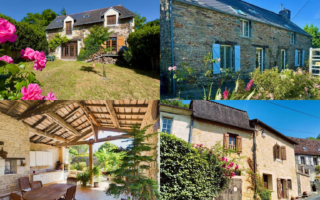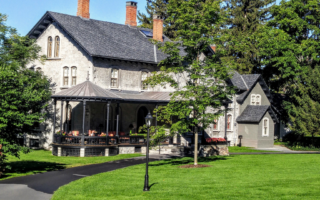Complete Guide to the South of France: Department-by-Department
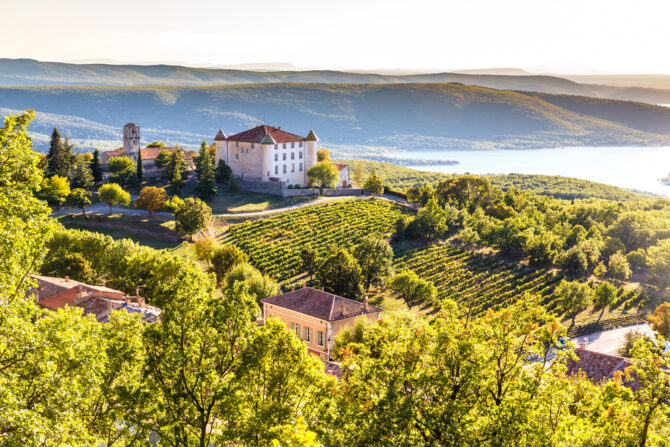

Discover the varied culture, landscape and property markets of France’s most southern areas, with Karen Tait
Colloquially known as Le Midi or Le Sud, the South of France is a large area taking up most of the southern half of the country, bordering Italy and Spain as well as the Atlantic Ocean and Mediterranean Sea.
Mention the South of France and it immediately conjures up images of lavender and the wild herbs of the garrigue, the turquoise waters of the Med, chic resorts like St-Tropez and Cannes, and driving along the famous corniche coastal road in an open-top sports car with mountains on one side and the sparkling sea on the other.
Not so obvious but an equally important part of the south is the historical region of Languedoc-Rousillon. Here you’ll find old fishing villages alongside modern seaside resorts, long sandy beaches. and lagoons or étangs, where you can even see flamingos alongside the windsurfers. As you approach the Spanish border, the coast becomes rocky, harbouring picturesque towns such as Collioure.
Cross the Pyrénées to the Atlantic Ocean and the flavours of the ancient Basque region await, with fiery pimento peppers echoed in the dark red paint of the half-timbered buildings. The Côte d’Argent (silver coast) boasts 200km of sandy beaches, washed by Atlantic rollers and backed by enormous sand dunes and Europe’s largest pine forest. In the seaside town of Biarritz, a hip surfing scene sits alongside elegant Art Deco architecture.
I’m going to take a closer look at the ‘deep’ south, those départements that sit directly alongside the Spanish border and Mediterranean Sea, starting in the west.
Pyrénées-Atlantiques (64)
Encompassing the Pyrenean mountains and the Atlantic coast, the Pyrénées-Atlantiques is part of the Basque country which crosses the border into Spain and has its own language, culture and cuisine. Naturally, there’s a strong Spanish influence here too. Further inland is the ancient province of Béarn, home to the Pyrénées-Atlantiques capital Pau as well as the towns of Oloron-Ste-Marie and Orthez.
With both ski and seaside resorts, as well as beautiful scenery, this is an ideal area for those seeking the great outdoors as well as vibrant towns. Even the capital Pau has plenty of green spaces, including the Parc Beaumont which offers views of the Pyrénées. The city is dominated by the Château de Pau, once used by Napoleon as a holiday home. The department also has five Plus Beaux Villages (Navarrenx, St- Jean-Pied-de-Port, La Bastide- Clairence, Ainho and Sare) and the inland Basque country has a spa town, Cambon-les-Bains. On the coast, Biarritz is the undisputed star, with its beaches and elegant. architecture. Along with other resorts like Hendaye, it is a surfing hotspot – the World Championships are held here. St-Jean-de-Luz and Bidart are also popular coastal towns, while Bayonne and Oloron-Ste- Marie are the sub-prefectures.
To the south-east of the department (crossing into Hautes-Pyrénées) the Pyrénées National Park offers a vast network of hiking trails and soaring mountain peaks. The Pyrénées make a good ski alternative to the Alps, with runs to suit all abilities and resorts like Artouste, Fabrèges, Iraty and La-Pierre-St-Martin.
Property prices are highest along the coast, in the Basque country, particularly in and around Biarritz, with Béarn being considerably cheaper. Average house price/m²: €3,269 (Pyrénées-Atlantiques); €9,461 (Biarritz); €5,550 (Bayonne); €2,487 (Pau); €1,767 (Oloron-Ste-Marie).
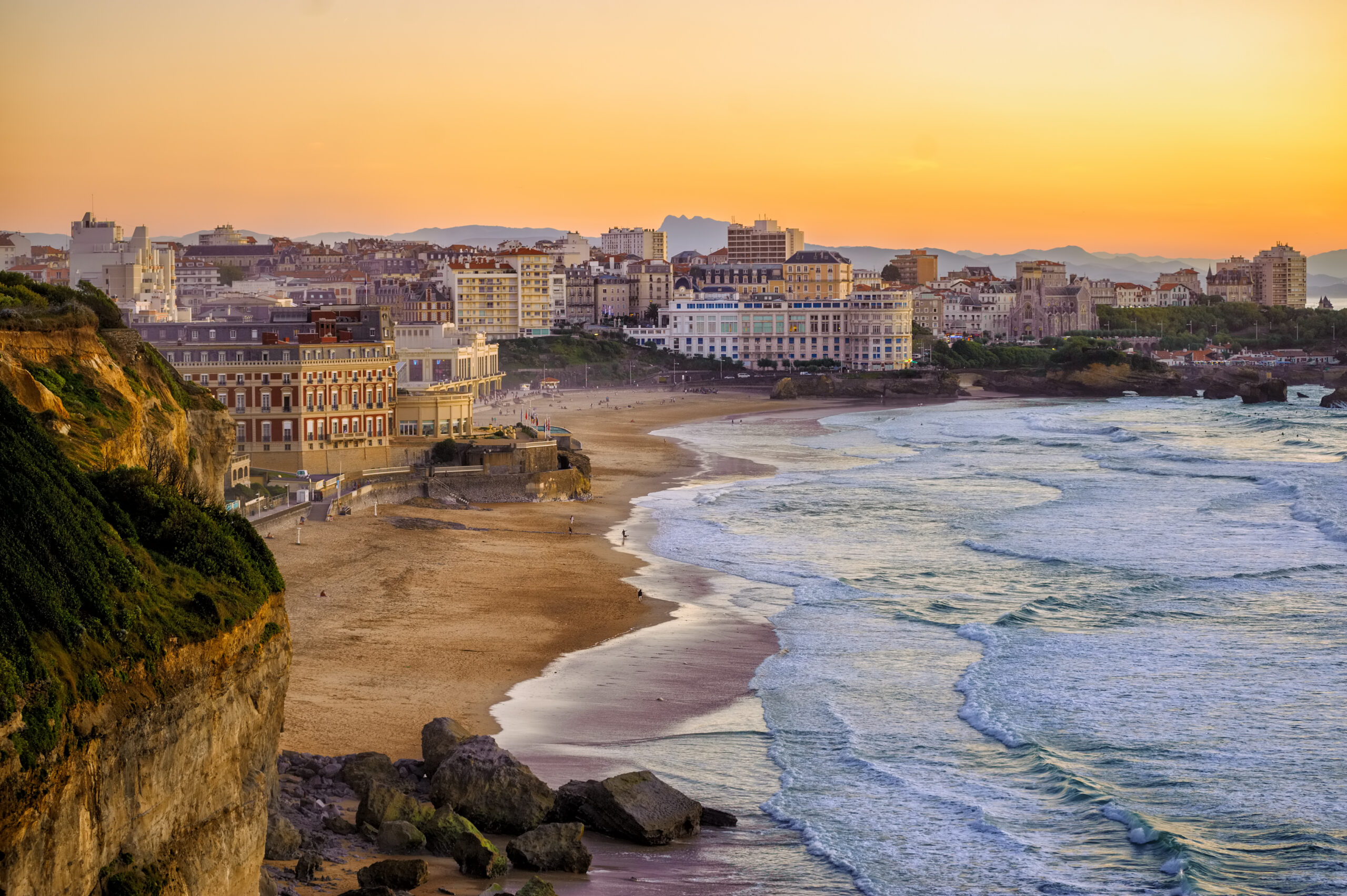
Biarritz, Pyrénées-Atlantiques – Shutterstock
Moving east, the Occitanie region includes three landlocked departments along the Spanish border (Hautes- Pyrénées, Haute-Garonne and Ariège), previously part of the old Midi-Pyrénées region, and four departments along the Mediterranean coast (Pyrénées-Orientales, Aude, Hérault and Gard), from the old Languedoc-Roussillon region.
Hautes-Pyrénées (65)
As the name suggests, this is at mountainous area, especially in the south, with spectacular natural attractions such as the Cirque du Gavarnie and Pic du Midi de Bigorre in the Pare National des Pyrénées. There are a number of ski resorts including St-Lary-Soulan, Grand Tourmalet and La Mongie, and the area is on the Tour de France route. Further north, the landscape gives way to flatter agricultural land.
There are several spa and ski towns including Cauterets, Bagnères-de-Bigorre and Argelès-Gazost. On the River Adour, the main town Tarbes dates back to Roman times and has a beautiful garden. the Jardin de Massey, moorish museum and Haras National stud farm; it also hosts the annual Festival Equestria.
Every year, thousands of people make the pilgrimage to the sanctuary at Lourdes in the foothills of the Pyrénées.
Property prices are highest in the south of the department, around the spa and ski towns. • Average house price/m²: €1,671 (Hautes-Pyrénées); €1,582 (Tarbes); €1,522 (Lourdes); €3,000 (Cauterets); €2,151 (Argelès-Gazost).
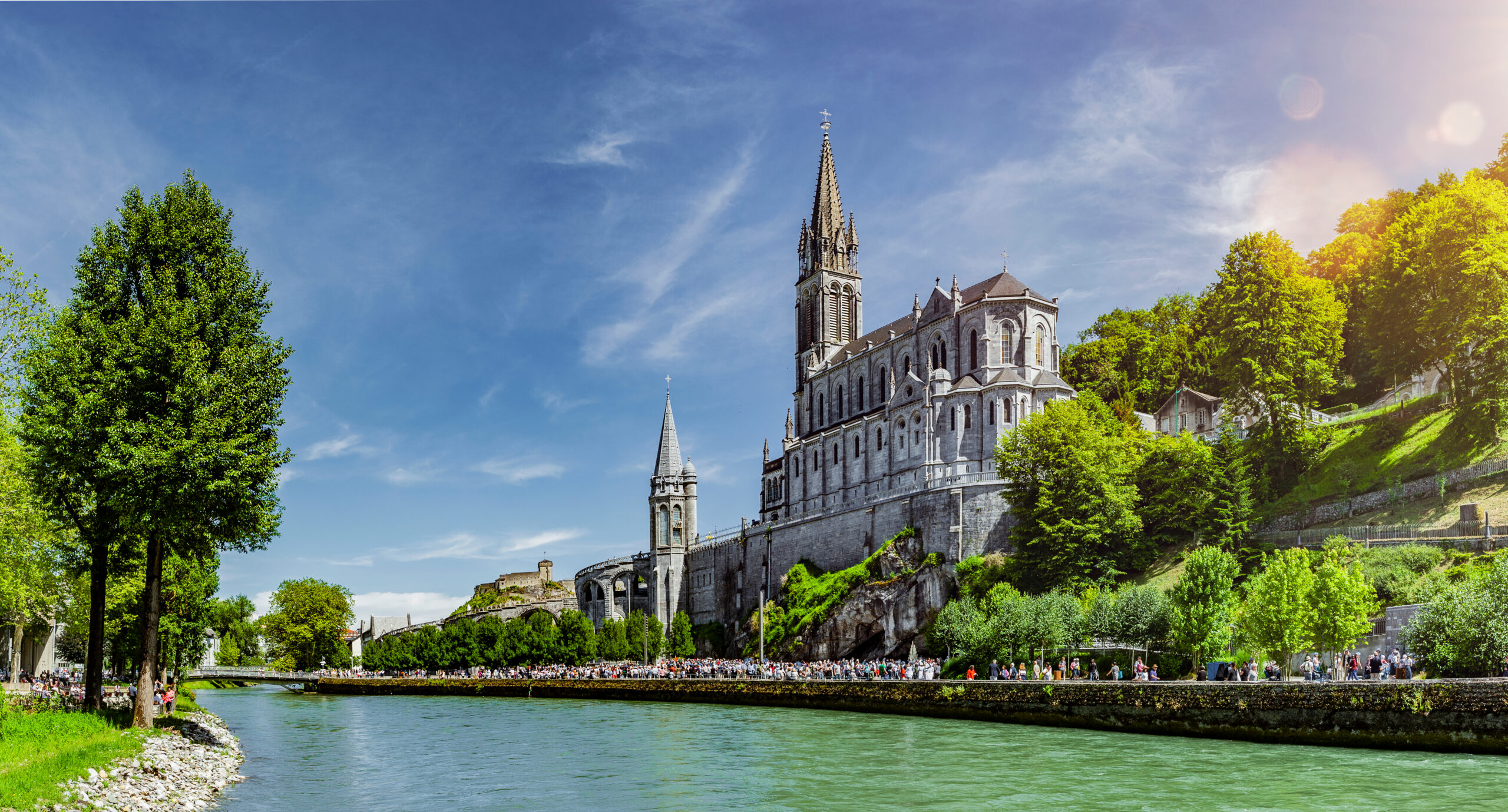
Lourdes, Hautes-Pyrénées – Shutterstock
Haute-Garonne (31)
A narrow department, with a short mountainous border with Spain, Haute-Garonne is home to the lively city of Toulouse and is crossed by the River Garonne and the Unesco-listed Canal du Midi. There are also pretty spa towns such as Bagnères-du-Luchon, the Plus Beau Village St-Bertrand-de-Comminges, four ski resorts including Peyragudes and Luchon-Superbagnères, and plentiful hiking routes.
Known as “la ville rose‘ due to its pink-brick architecture, Toulouse boasts one of France’s finest Romanesque buildings, St-Sernin cathedral, as well as a leading aerospace sector and the Cité de l’Espace space discovery centre. It also has the department’s priciest property. Other important towns include St-Gaudens and Muret.
Average house price/m²: €2,903 (Haute-Garonne), €4,264 (Toulouse); €2,380 (Bagnères-de-Luchon); €1,428 (St-Gaudens).
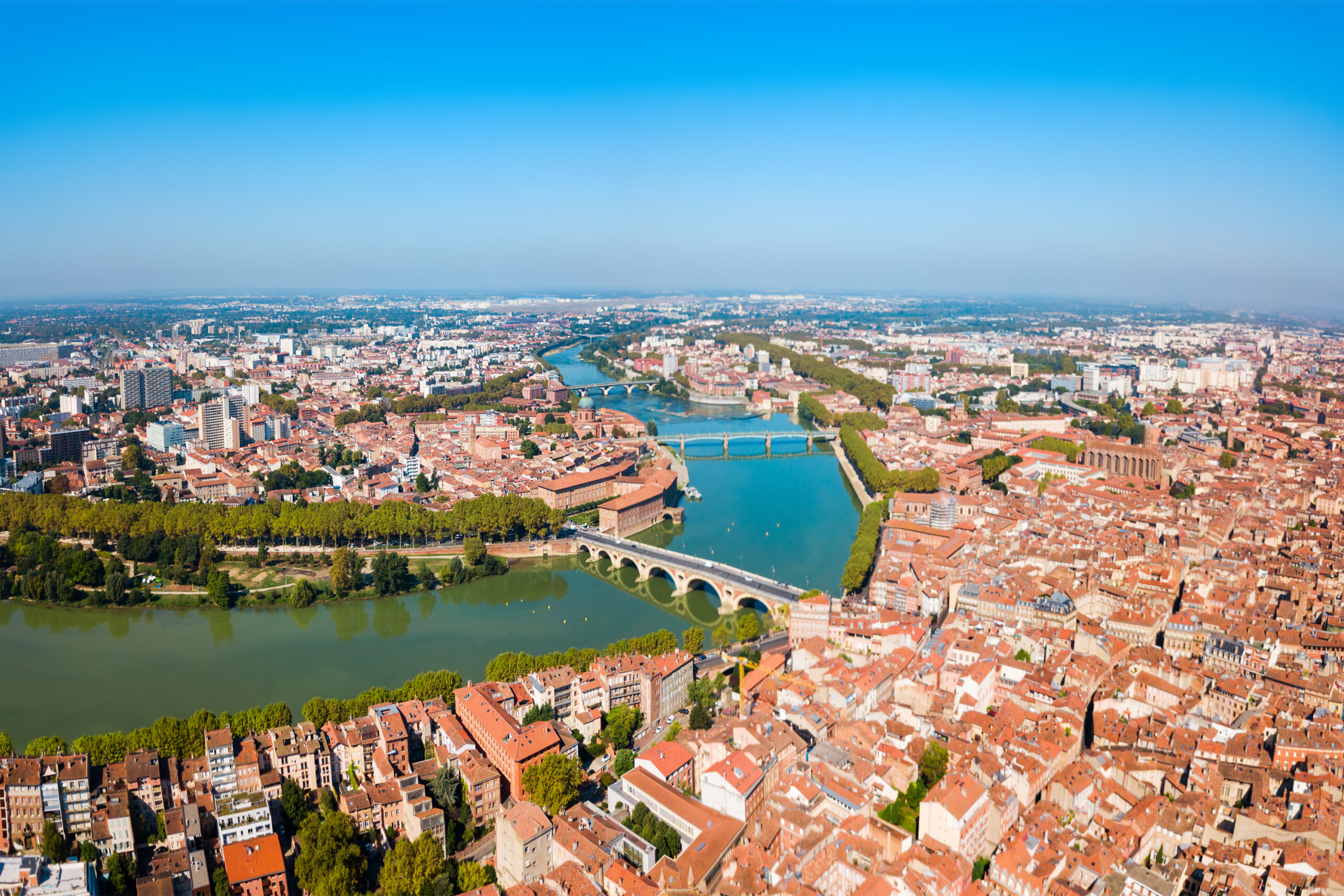
Toulouse, Haute-Garonne – Shutterstock
Ariège (09)
Bordering Spain and Andorra, Ariège is an unspoilt, sparsely populated area with over half of its land being mountainous with huge swathes of forest. A nature-lover’s paradise, it is home to the Pyrénées-Ariégeoises Regional Natural Park and Orlu valley nature reserve, as well as prehistoric caves and Cathar castles (Montségur and Roquefixade). Pretty towns and villages include Camon, Mirepoix, Tourtouse, St-Liziers, Carla-Bayle and Mazères, while Ax-les-Thermes is both a ski and spa town.
At the foot of the Pyrénées and the confluence of the Ariège and Arget rivers, close to the Spanish border, the main town Foix has a castle museum and fewer than 10,000 inhabitants. Pamiers is actually the largest city, known for its three bell towers; St-Girons is another key town.
Property is most expensive in the south of the department, in the Haute-Ariège, around towns like Ax-les-Thermes. • Average house price/m²: €1,455 (Ariège): €1,520 (Foix); €1,300 (Pamiers); €1,479 (St-Girons); €2,275 (Ax-les- Thermes).
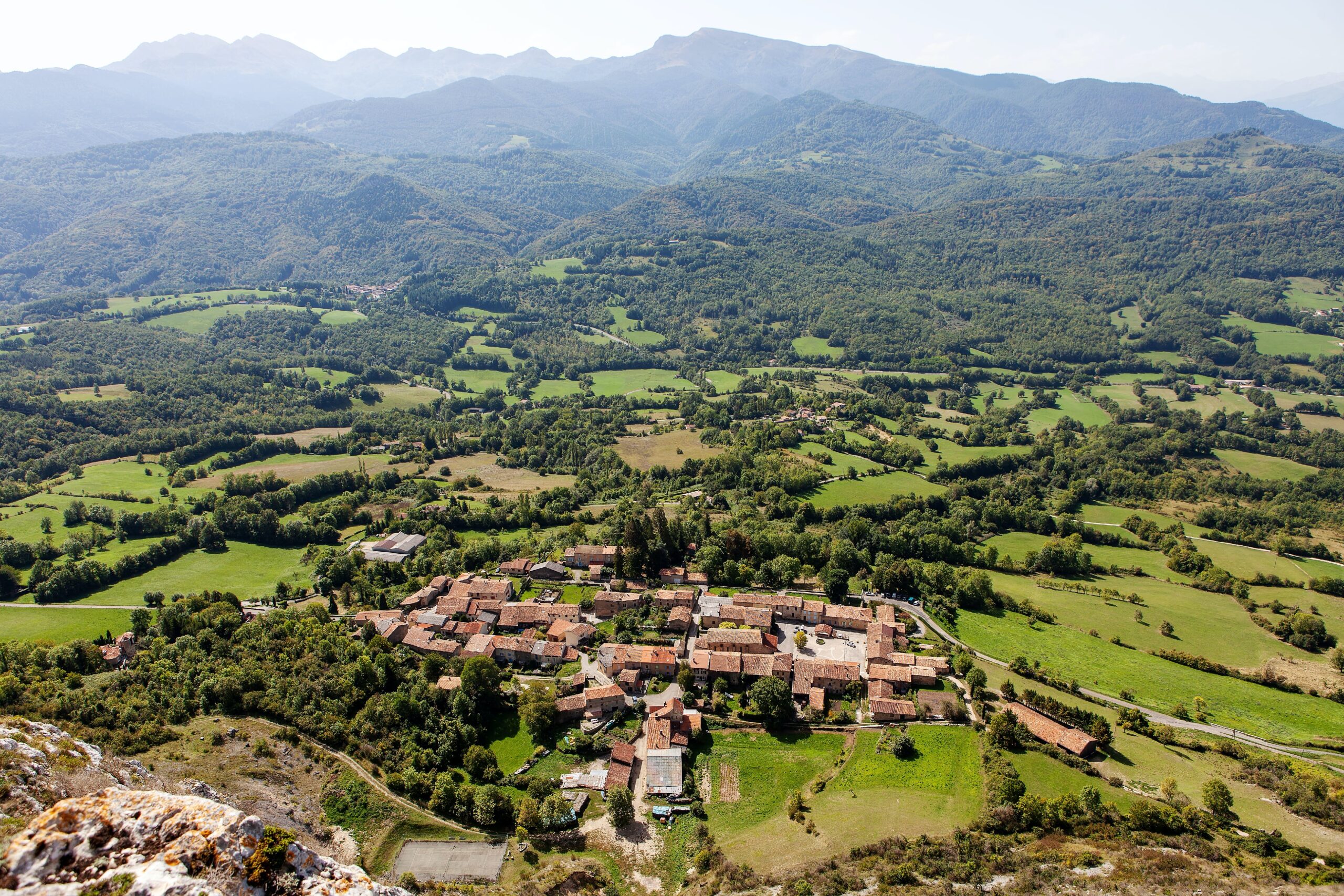
The verdant Ariège countryside – Unsplash
Pyrénées-Orientales (66)
From Mount Canigou to the Vermillion coast on the Mediterranean, the Pyrénées-Orientales scenery is spectacular and diverse, with plenty of sea-based and mountain activities on offer, including skiing in resorts such as Les Angles and Font-Romeu.
The capital Perpignan is the last major city in France before the Spanish border, and was once Catalonia’s second city: after Barcelona, so naturally has a Spanish feel.
Property prices are highest along the southern coast, in particular the pretty port of Collioure, which attracted artists such as Matisse and Picasso. The town of Céret was one of the birthplaces of Cubism; its Musée d’Art Moderne holds works by Picasso, Matisse and Chagall. Amélie-les-Bains is a popular spa town, and sandy seaside resorts include Argelès-sur-Mer, Banyuls and St-Cyprien. The department has five Plus Beaux Villages – Castelnou, Eus, Evol, Mosset and Villefranche- de-Conflent.
Average house price/m²: €2,624 (Pyrénées-Orientales); €2,076 (Perpignan); €5,377 (Collioure); €2,718 (Céret); €1,994 (Prades); €3,329 (Les Angles).
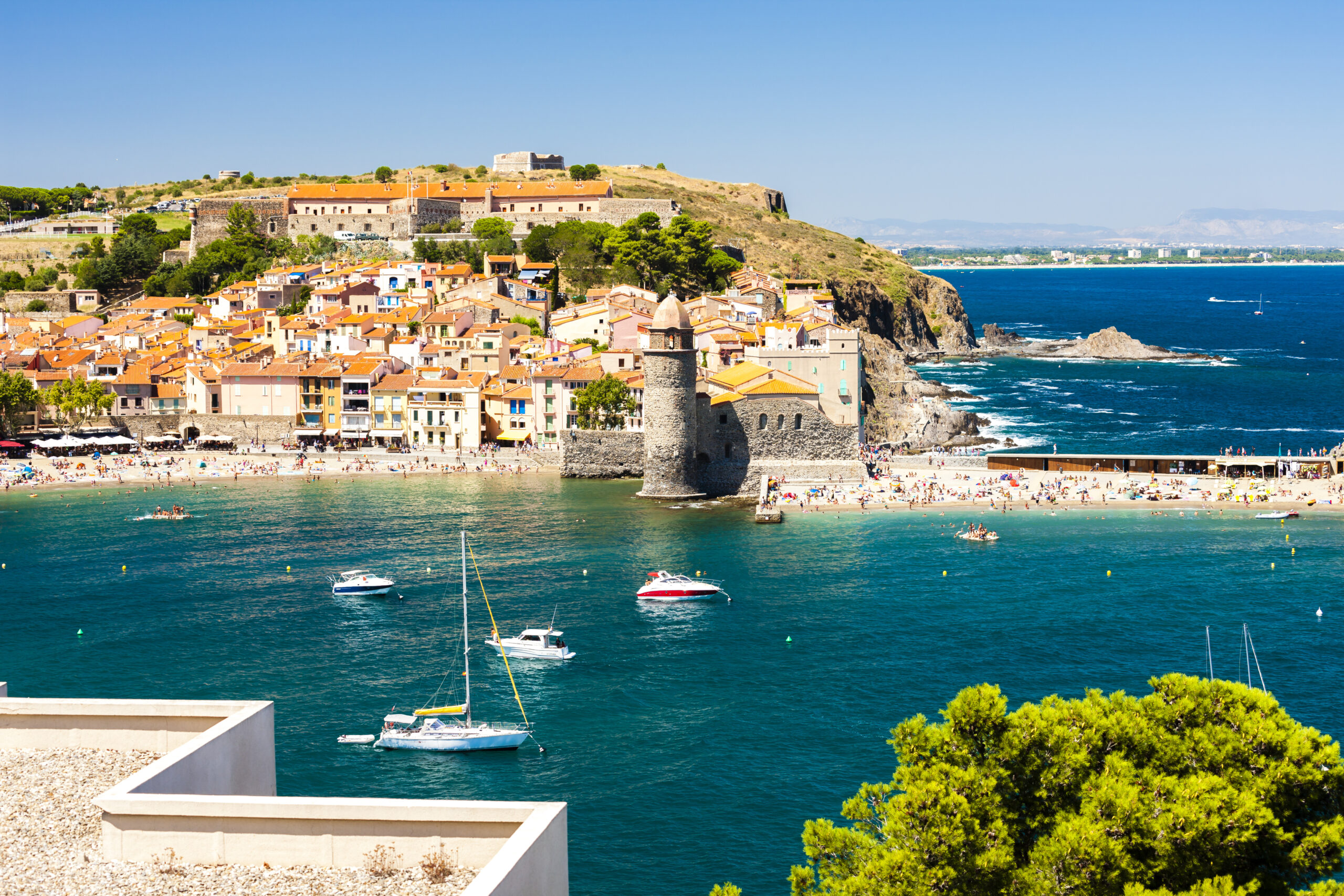
Collioure, Pyrénées-Orientales – Shutterstock
Aude (11)
With several impressive castles, this area is known as Cathar Country. It is also home to the Corbières, Minervois and Fitou vineyards as well as popular seaside resorts such as Gruissan and Leucate. There are mountainous areas in the north (Montagne Noire) and south (Pyrénées), ideal for outdoor activities. Aude is also a passionate rugby area.
The capital Carcassonne has its much-photographed citadel with ramparts and turrets and also the ville basse across the Aude river. Narbonne by the Natural Park. coast is actually the bigger town, and the Unesco-listed Canal du Midi runs through both cities. Also noteworthy are Limoux (on the River Aude and home to the sparkling white wine), Lagrasse (Plus Beaux Village with an 8th-century abbey) and Castelnaudary (said to be the birthplace of the south-west dish cassoulet).
Property prices are highest along the coast, especially in and in and around Narbonne. • Average house price/ m²: €1,940 (Aude); €1,673 (Carcassonne); €2,472 (Narbonne); €1,524 (Limoux); €3,502 (Gruissan).

Carcassonne, Aude – Shutterstock
Hérault (31)
Hérault has a long sandy coast punctuated by resorts such as La Grande Motte, Agde (home to Europe’s largest naturist centre), Frontignan and the harbour town of Sète, which sits next to the large Etang du Thau lagoon. The department also includes part of the Cévennes National Park and Haut-Languedoc Regional National Park.
The capital is Montpellier, the third largest city on the Med coast, with a large lively central square and fine architecture including elegant hotels particuliers. Its university is one of the oldest in the world and there’s a big student population. The department has many historic and attractive towns, including Béziers, Pezenas and Lodève, as well as three Plus Beaux Villages (Minerve, Olargues, St-Guilhem-le-Désert).
Coastal property is most expensive, in particular in the resorts of La-Grande-Motte and Palavas-les-Flots. • Average house price/m²: €3,324 (Hérault); €4,385 (Montpellier), €2,052 (Béziers); €2,252 (Lodève); €2,966 (Pezenas); €5,603 (La-Grande-Motte).
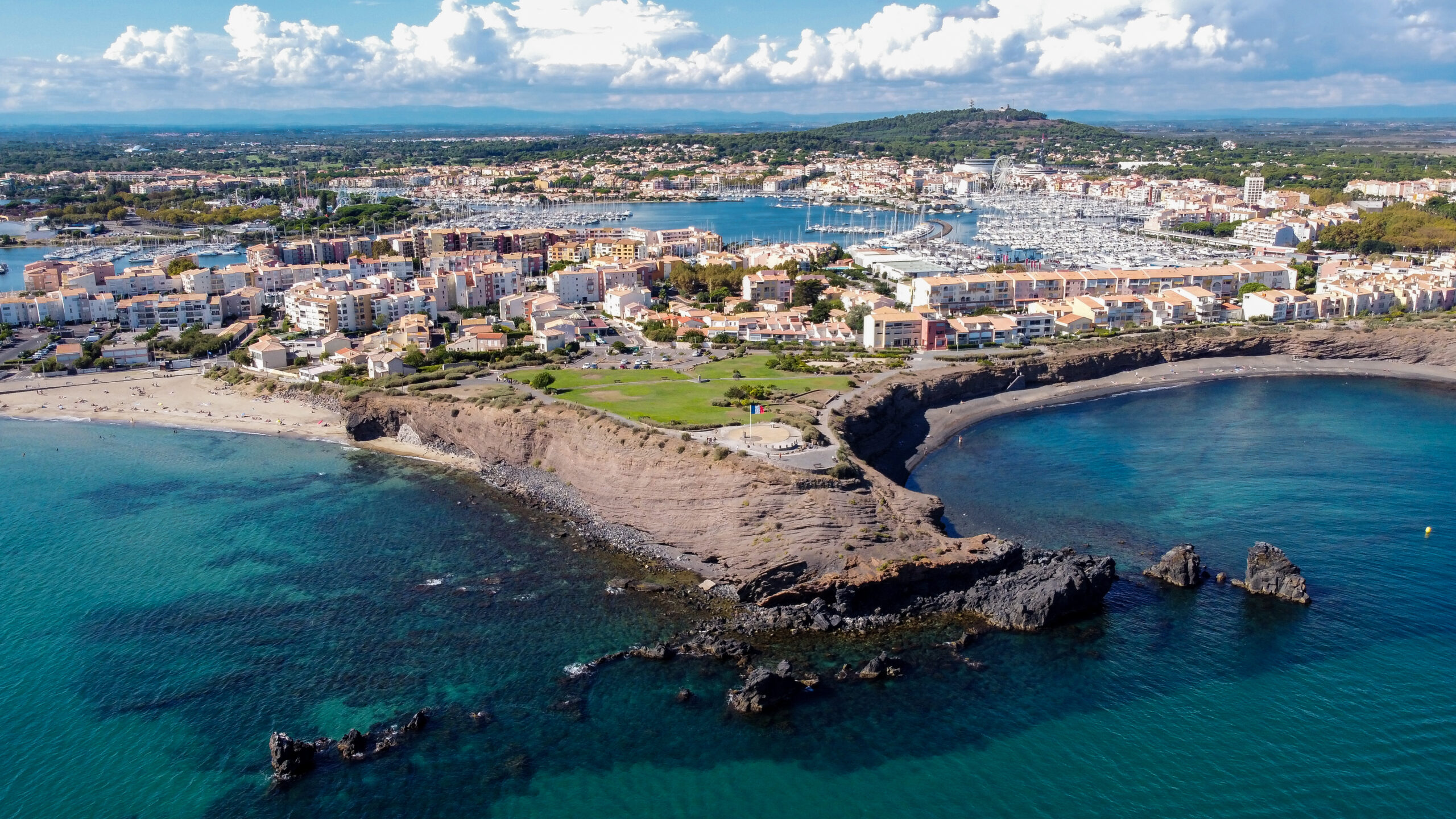
Cap d’Agde, Hérault – Shutterstock
Gard (30)
Named after the River Gardon, Gard has a small coastline and is known for its Roman remains – the Via Domitia Roman road linking Italy and Spain, the amphitheatre in the departmental capital Nimes and the nearby Pont du Gard aqueduct. Nimes was also the birthplace of denim, the word coming from ‘serge de Nimes”.
Unspoilt scenery can be found in the Cévennes mountains and Causses limestone plateaux. Gard is also home to the source of Perrier mineral water.
Property prices are highest around the popular town of Uzès, the coastal resort Le-Grau-du-Roi and fortified Aigues-Mortes. Other towns of note include Ales and Le Vigan, and there are three Plus Beaux Villages (Aigueze, Montclus and La Roque-sur-Cèze).
Average house price/m²: €2,610 (Gard); €2,762 (Nimes); €2,041 (Alès); €1,879 (Le Vigan), €3,720 (Uzės); €5,097 (Le-Grau-du-Roi).
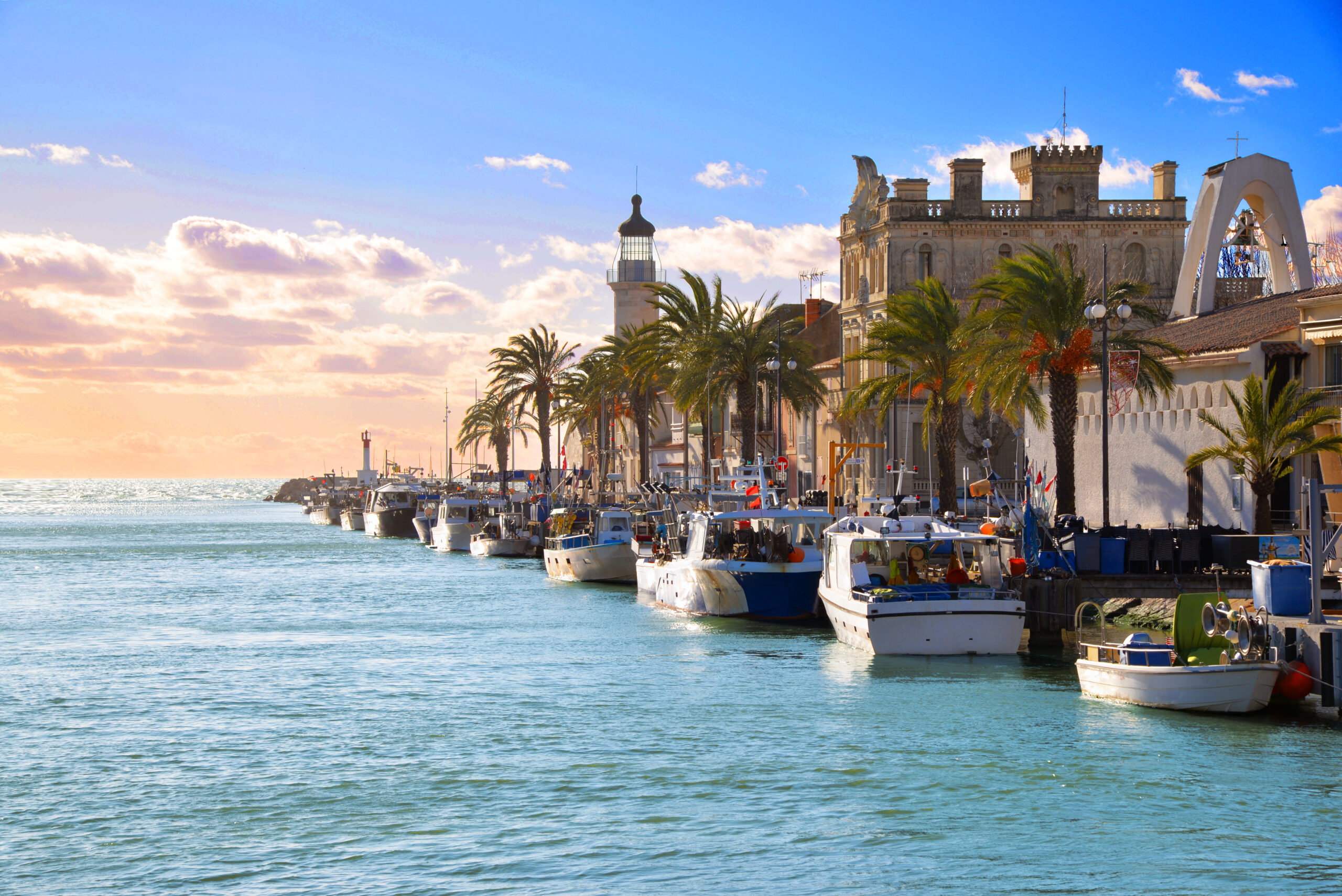
Grau-du-Roi, Gard – Shutterstock
Crossing into the Provence-Alpes-Cote-d’Azur region, we reach the three coastal departments of Bouches du-Rhône, Var and Alpes- Maritimes, with the eastern part comprising the Riviera. Although not covered here, the inland departments of Vaucluse and Alpes-de-Haute-Provence are also very much part of the South of France.
Bouches-du-Rhône (13)
From the vibrant coastal city of Marseille to the wild beauty. of the Camargue wetlands with its cowboys and white horses, to the turquoise coves of the Calanques National Park, Bouches-du-Rhône is a department of contrasts, captured on canvas by artists such as Vincent Van Gogh. and Paul Cézanne. It also has France’s oldest city, largest commercial port and second largest city (with 16 arrondissements) – Marseille is a cosmopolitan hub with the renowned Museum of European and Mediterranean Civilisations (Mucem) housed in a futuristic-looking building. Tourist hotspots include the Vieux-Port with its seafood restaurants, the hilltop basilica of Notre-Dame de la Garde and the winding streets of Le Panier old town. Just off the coast is the Ile d’If with its château- prison, made famous in The Count of Monte Cristo.
Other key cities include Aix-en-Provence, Arles (Roman amphitheatre), Istres, Martigues and Aubagne, and there are many picturesque towns and villages such as St-Rémy-de-Provence, Les- Baux-de-Provence, Salon-de- Provence and Tarascon.
Property prices are highest in the seaside resorts of Cassis and La Ciotat, the inland area around St-Rémy-de-Provence, and the coastal and central districts of Marseille, such as La Plage, Bompard, Roucas Blanc, Montredon, Bonneveine, Endoume, Périer and Ste-Anne, all with average square metre prices over €4,000, some over €5,000.
Average house price/m²: €4,358 (Bouches-du-Rhône); €4,721 (Marseille); €5,818 (St-Rémy-de-Provence); €5,990 (Aix-en-Provence); €3,423 (Arles); €5,931 (La Ciotat); €9,093 (Cassis).
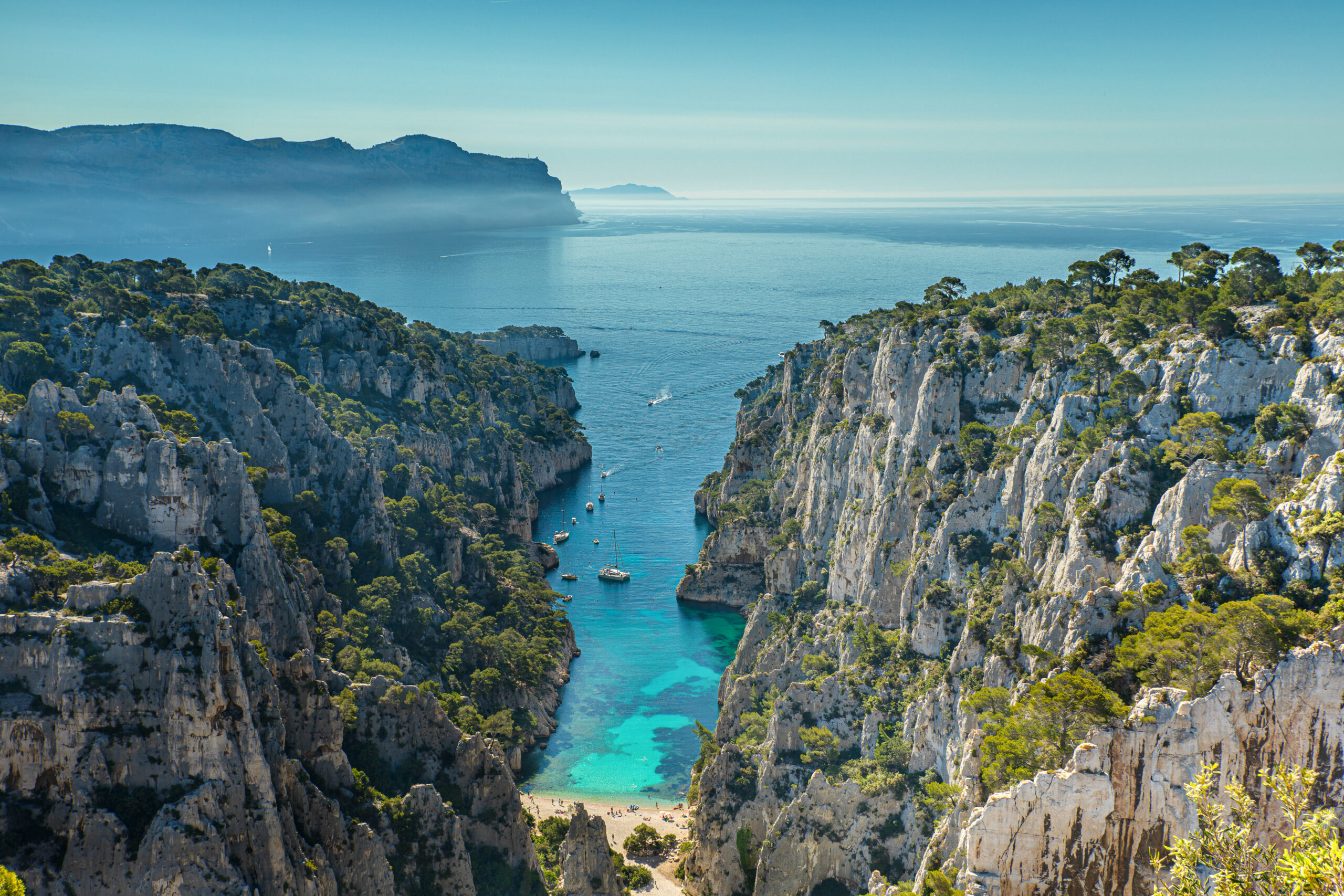
Marseille, Bouches-du-Rhône – Shutterstock
Var (83)
At the heart of the French Riviera, Var has 420km of coast and is home to glamour hotspot St-Tropez as well as lower key but equally popular resorts like St-Raphael, Ste-Maxime and Bormes-les-Mimosas.
Toulon, the main town, has an important commercial and military harbour, home to the French Mediterranean Fleet. The old town has narrow pedestrianised streets, small. squares, fountains, a cathedral and a celebrated Provençal market on the Cours Lafayette.
Other important towns include Frejus, Brignolles and Draguignon. Just off the coastal town of Hyères (where Queen Victoria liked to holiday) lie the picturesque Hyères Porquerolles, Port-Cros and Levant.
Inland, there are mountains (foothills of the Alps), large swathes of forest and the spectacular Gorges du Verdon, often called France’s Grand Canyon and popular for water sports like canyoning. Manmade attractions include the 12th-century abbey of Le Thoronet, Fréjus cathedral, said to be the oldest Christian structure in Provence, and the Paul Ricard motorsport race track at Le Castellet.
The area is also home to coastal vineyards producing Bandol AOC wine, one of the oldest appellations in France.
While property is expensive throughout the department, the highest prices are on the coast, especially around exclusive St-Tropez, Bandol, Sanary-sur-Mer and St-Cyr-sur-Mer.
Average house price/ m²: €4,938 (Var); €4,163 (Toulon); €19,634 (St-Tropez), €3,235 (Draguignon); €2,905 (Brignolles); €7,386 (Bandol).
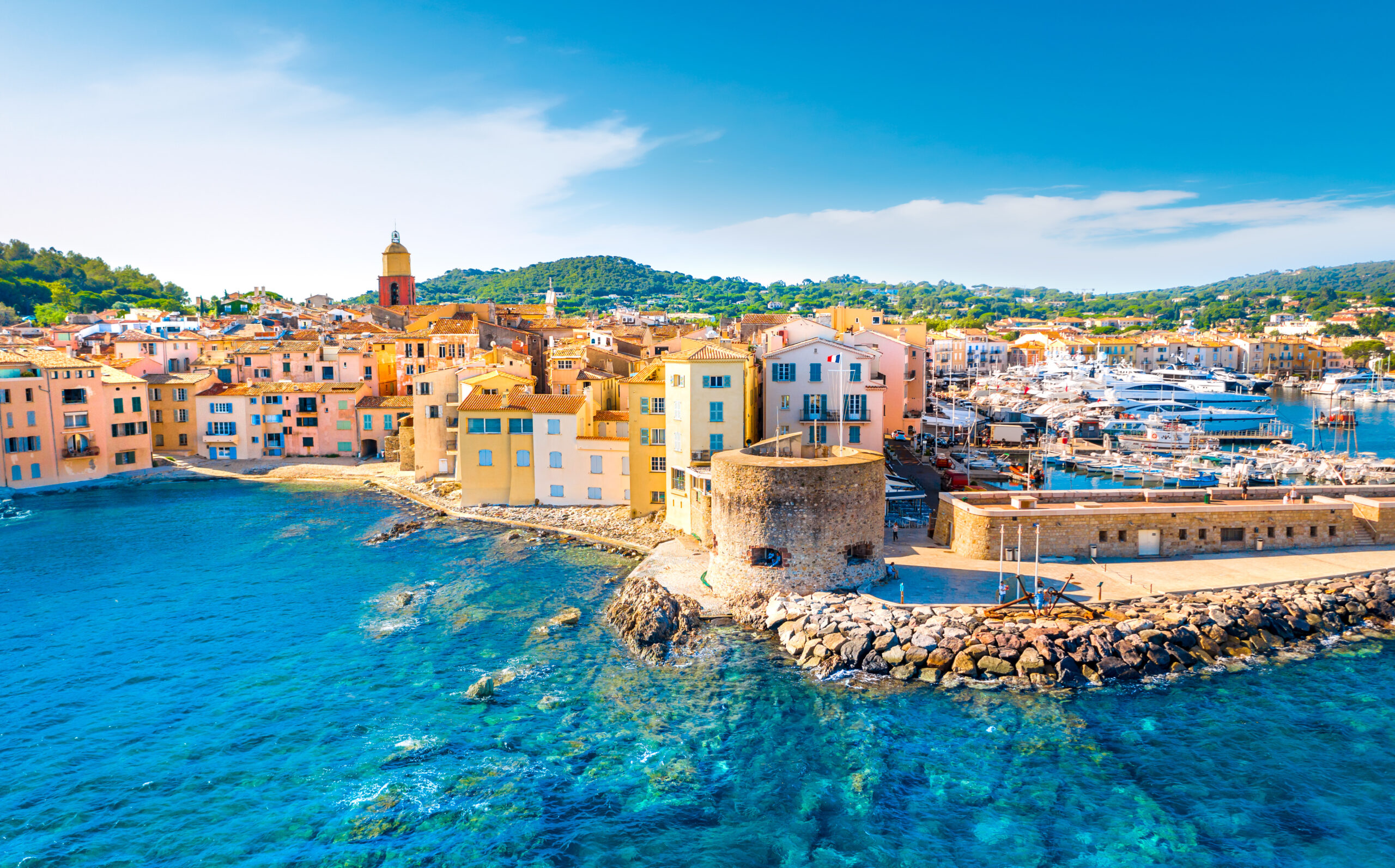
Saint-Tropez, Var – Shutterstock
Alpes-Maritimes (06)
At the most south-eastern corner of France, on the border with Italy and Monaco, the most glamorous department of all. The well-known resorts of Nice, Cannes, Antibes and Menton have long attracted celebrities and holidaymakers, but there is much more to this area which also offers mountain scenery in the Mercantour National Park, picturesque hilltop Provençal villages, perfume capital Grasse, and even ski resorts (Isola 2000 and Auron) – you can swim in the sea in the morning and ski in the mountains in the afternoon!
Capital of the Riviera, Nice boasts the elegant tree-lined Promenade des Anglais, a historic old town, busy markets and a thriving social scene. It has inspired many painters including Matisse and Chagall, whose work can be seen in the city’s museums. The Riviera is also known for its festivals including the Menton Lemon Festival, Nice Carnival and the Cannes Film Festival.
Property prices are highest on the coast, in desirable parts of Nice (Mont Boron, Rue de France and Médecin), and exclusive resorts like Èze, Cap d’Ail, Villefranche-sur- Mer, Roquebrun-Cap-Martin, Cagnes-sur-Mer, Villeneuve- Loubet and Antibes.
Average house price/m²: €5,641 (Alpes-Maritimes); €5,933 (Nice); €7,607 (Antibes); €4,340 (Grasse); €6,159 (Menton); €14,608 (Cap d’Ail); €13,544 (Villefranche-sur- Mer); €12,026 (Eze).

Menton, Alpes-Maritimes – Shutterstock
The unique mix of legal, financial and tax advice along with in-depth location guides, inspiring real life stories, the best properties on the market, entertaining regular pages and the latest property news and market reports makes French Property News magazine a must-buy publication for anyone serious about buying and owning a property in France.
Lead photo credit : Shutterstock
Share to: Facebook Twitter LinkedIn Email
More in Nouvelle Aquitaine, Occitanie, Provence-Alpes-Cote d'Azur


